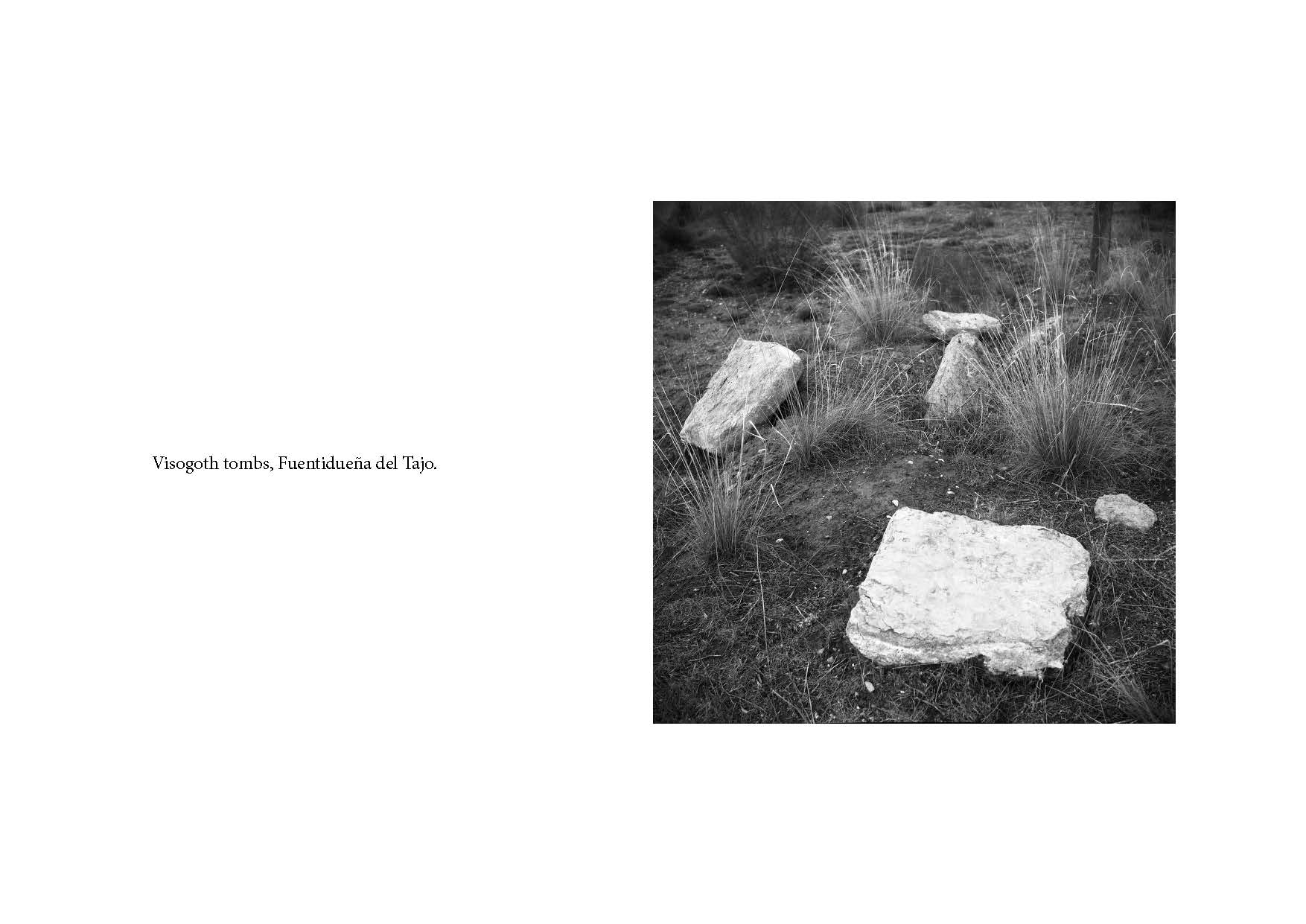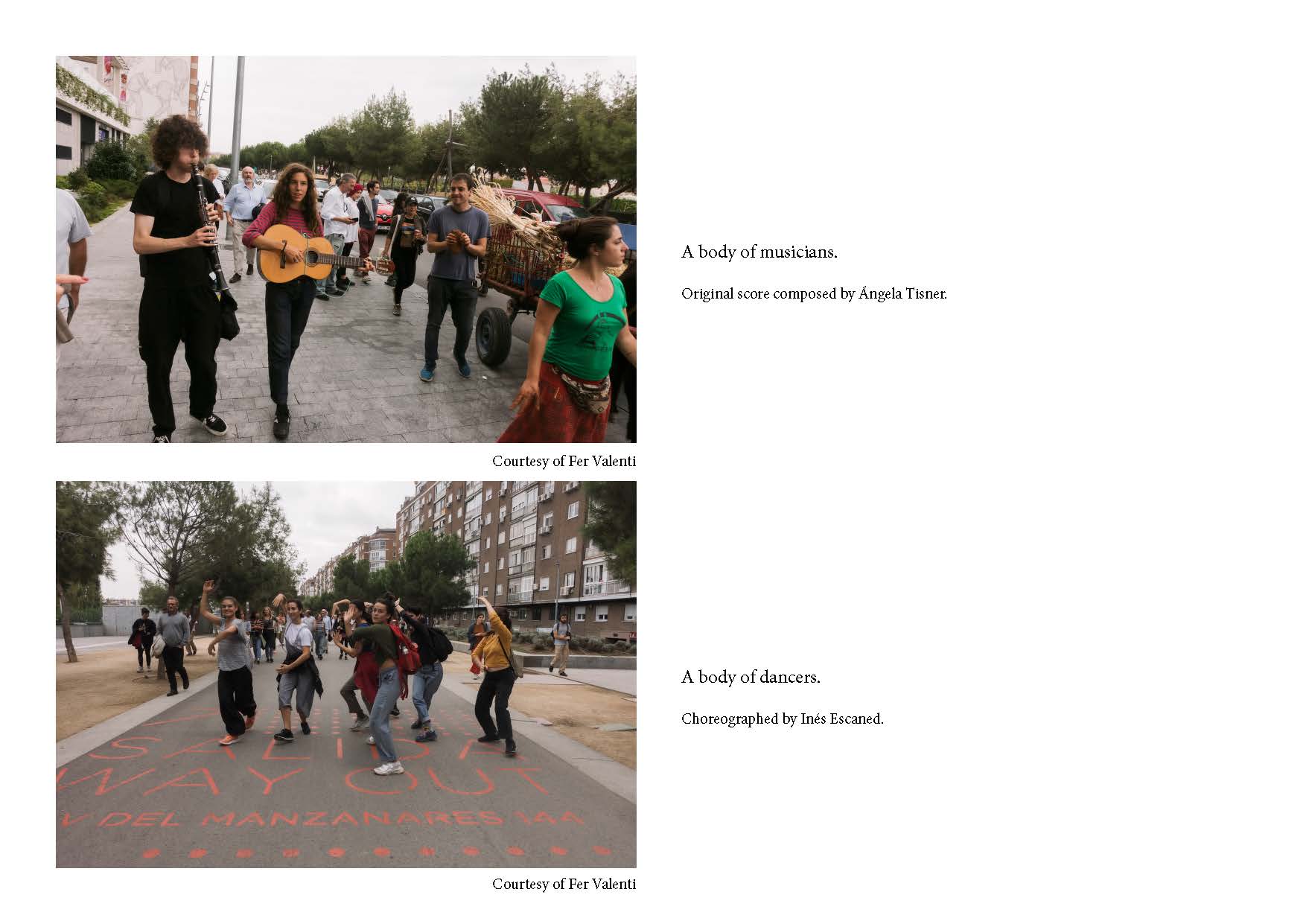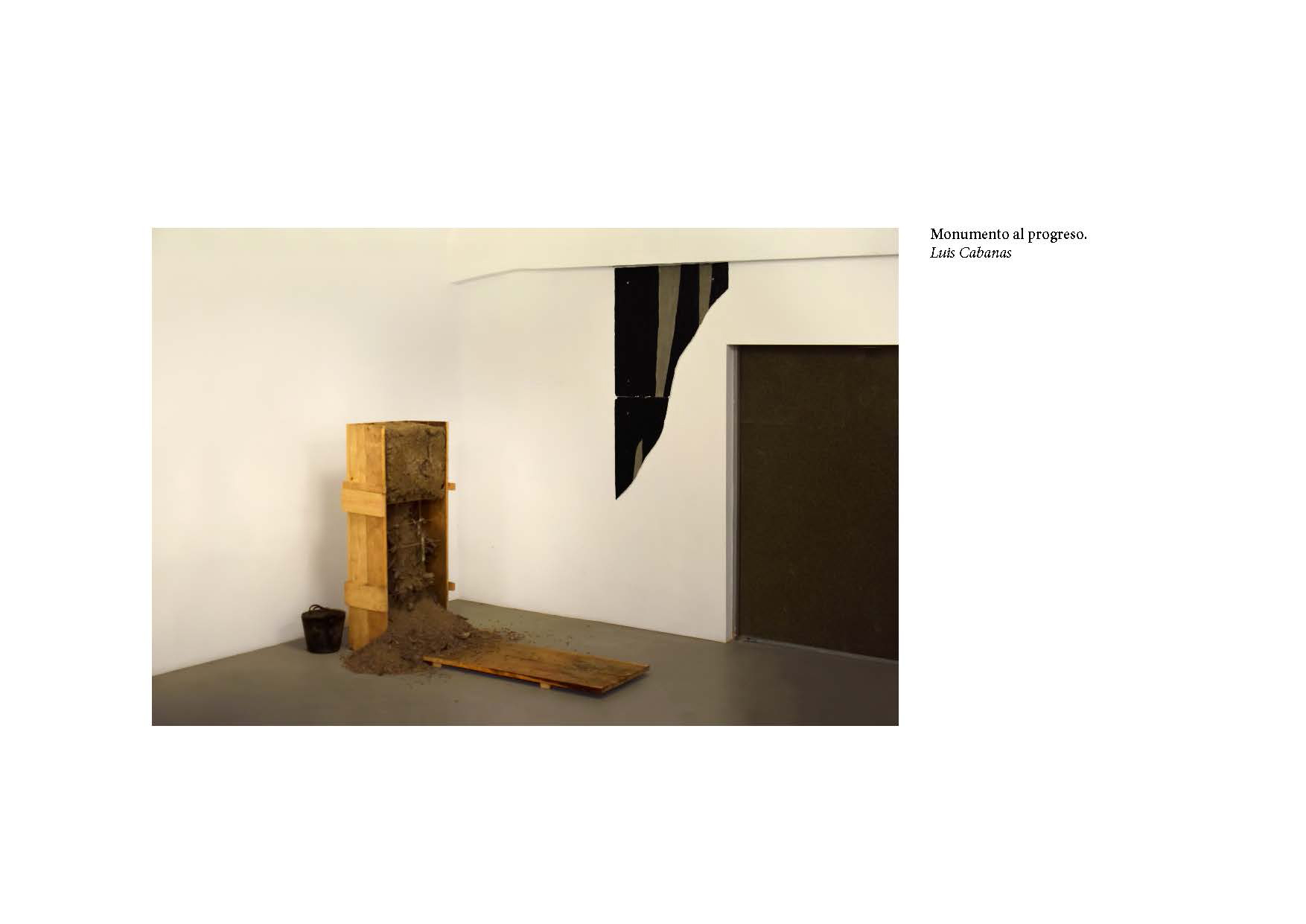Éxodo, Untitled
11-21 September / 2020From Nohales, Cuenca — Carabanchel, Madrid

A collective work by
Julia Ábalos
Frida Abella
Rebeca Allen
Luis Cabanas
Olivia Ferreira
Diego Garrido
Lébora Devy
Leandro Navarro
Mateo Revillo
Ángela Tisner
Julia Ábalos
Frida Abella
Rebeca Allen
Luis Cabanas
Olivia Ferreira
Diego Garrido
Lébora Devy
Leandro Navarro
Mateo Revillo
Ángela Tisner

On the eleventh of September, a convoy of musicians, artists and shepherds left the vicinity of Cuenca, and began walking towards number 26 on Calle Santiago Estévez, in the Carabanchel district of Madrid. The journey lasted ten days. Accompanied by two donkeys pulling wagons loaded with clay and rosemary, the convoy produced a number of votive sculptures, medium format photographs and sound recordings throughout the journey.
This piece evokes foregone paradises and humankind’s most important capacity: adaptation, the kind that is sustained by the collective imagination. The work is a social sculpture and a fabric of affections in expansion. It reflects on the transformation of rural and urban territory, and the mingling of the land, the cities, and their peripheries.
Adopting the form of an outer-ring romería*, Éxodo produced a sentimental journey that carries with it the mother matter of the new neighborhoods. This lived fiction has assembled a collective narrative that integrates the lives of those who suffered the great migratory trauma of the fifties.
*A romería is a pilgrimage where citizens are welcome to join and take part in the vagrant music, dance and other festive activities, usually to celebrate a local saint.


Audio / Lebora Devy
Boletínes del Éxodo.
The bulletins consist of field recordings and commentary by Lébora Devy chronicling the entire journey. They include fables by Diego Garrido. They were broadcast daily and in real-time, between September 16th and 21st, on Radio Relativa. The assembling of the pilot bulletin was made possible thanks to A.M. de Miguel. Bulletins numbers 2 to 5 were mixed by Christian Osuna.













Medium format photography / Olivia Ferreira, Luis Cabanas, Mateo Revillo
Saturday, 21 September / 2020
Romería



When the procession arrived at the outskirts of the city, people from the neighborhood and other social and artistic bodies were summoned to join the convoy, transforming it into a mobile and festive industry.
The crowd, of at least 150 people, was organized into three groups: musicians, a body of dancers, and an undefined body of potters.
21 September—1 October / 2020
Exhibition

The exhibition opens with the arrival of the donkeys and the pieces that were made along the way. They are unfurled before the public and placed on the centerpiece of this historical portrait, the reliquary that holds these exvotos (votive offerings).

The reliquary holds the material from our Éxodo in the form of small vessels.
The arrangement on the wooden panels is an architectural echo of the buildings constructed by rural immigrants during the 1950s, households fighting to stay afloat in the peripheral neighbourhoods of the city.
Along with the wagons that carried the cargo, the ground floor contains the terrestrial part of the journey, echoing the overlap of sensibilities of the artists and the people who have been involved in the production of the adobe boats, thus becoming the essential sediment of the exhibition.
The arrangement on the wooden panels is an architectural echo of the buildings constructed by rural immigrants during the 1950s, households fighting to stay afloat in the peripheral neighbourhoods of the city.
Along with the wagons that carried the cargo, the ground floor contains the terrestrial part of the journey, echoing the overlap of sensibilities of the artists and the people who have been involved in the production of the adobe boats, thus becoming the essential sediment of the exhibition.







Press: Entrar a Madrid en Burro by Sergio C. Fanjul for El País











